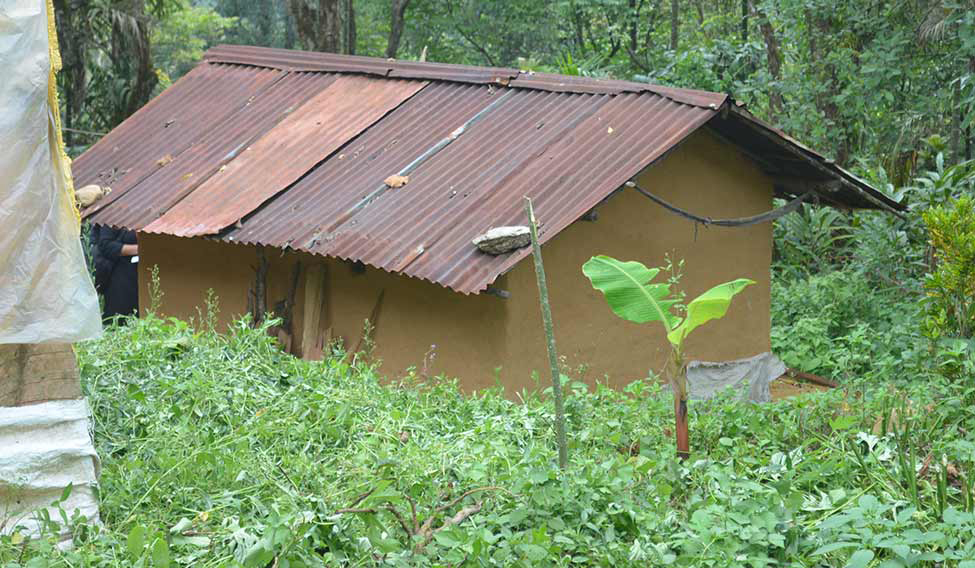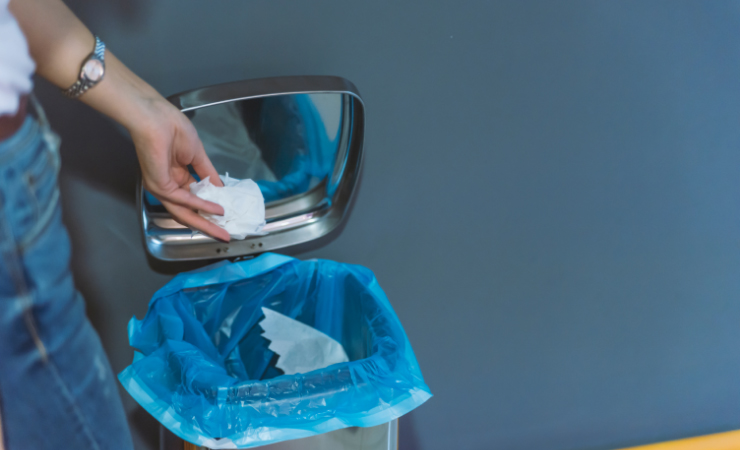Overnight Adulthood: The Story of my Thirandu Kalyanam

Menarche is the first menstrual period in a female adolescent. In the past, when a girl attained puberty, a ceremony called vayass-ariyikkal or thirandu kalyanam (age indicating or puberty marriage) was generally performed in Kerala. Popularly known as kunjikalyanam among the Nair community, it lasts four days during which the girl stays in a separate room following (ritualistic) pollution rules.
The menstruating girl is said to be thirandu, which means polluted. During menarche, women are not allowed to touch or see anyone, especially men. I wasn’t even allowed to drink water from the same bottle, share food with others, or go near the kitchen.
While this practice is not as widespread today, some families still choose to commemorate the onset of menstruation in this manner. I was one of the few people in my friends group who underwent a thirandu kalyanam.
I was ten years old when I learned about menarche and thirandu kalyanam for the first time, from the Malayalam movie Pavithram (1994). In the film, the heroine experiences her first period, and her brother explains to one of her male friends how, she is now becoming a grown woman, and mentions the phrase, “Blood on the moon.” The girl in the movie is advised not to go outside for four days and not even to look at the sky. When I had my period, this is what came immediately to my mind.



My thirandu kalyanam started with a kurava (an ululating sound) by the women in the joint-family, to alert the neighbourhood women about my periods. I was then bathed and made to sit on a thick woollen blanket called karimpadam covered with a white cloth called vella. I was given a valkannadi (mirror) which I would hold for the next four days. I didn’t understand it at first when my aunt said to me, “Ellam kazhinju. Ini ninakk ulsavom thullalum onnum illa” (Everything’s over. Now there’s neither festival nor dance for you).

Savithri muthassi (grandmother), my neighbour, recalls from her memory about her thirandu kalyanam. There was a piece of iron kept under her karimpadam which was said to keep her away from “harmful thoughts and energies”.
My aunt shared a different story about her mother’s first period. She had been moved to a menstrual room called valaimapura, away from the house. Along with the valkannadi, she was given a small penknife to protect herself as she would be alone in the room.
The taboo period ends on the fourth day, after the bath called masakuli and a ritual called tullirukkuthal. Tullirukkuthal is done by extracting liquid from turmeric and other herbs and applying this paste to the “polluted” girl. This liquid is said to have purifying properties that terminate the pollution.
The bathing ceremony is usually conducted in a nearby pond or river. But mine was conducted in a bathroom.


I was bathed by all the women in my house and was given new clothes to wear. I was dressed up like a bride. I wore gold jewellery and jasmine flowers. With a veil covering my head, I sat in the living room, the centre of all the activity in the house, with a lighted nilavilakku (lamp), idangazhi nellu (measuring vessel associated with the nellu (paddy) system in Kerala. One idangazhi is around 800 grams), kindi (a metal pitcher usually used to dispense holy water), and ashta mangalyam (a group of eight auspicious things believed to bring good luck) in front of me. Everybody started giving me gifts—from gold to dresses and sweets. The ritual ended with a feast for all my family members and neighbours.
Pollution and Taboos
Women are deemed untouchable during menstrual period, unable to touch others or their belongings, and may even be treated as invisible, particularly by men. This relegation mirrors the status of the untouchables, akin to being a Chandala, according to Manu (III, 239). Segregation aims to protect women from harmful influences, as their “impurity” is believed to attract evil spirits, and also to prevent others from being contaminated. During my menarche rituals, I was confined to the same room for four days without any physical contact until the fourth day.


Menstruating women are considered to be polluted every month during their period. However, in case the menstruation does not end on the fourth day, a partial pollution concept called thadi-shudham is applied. This means that the woman can go back to her domestic duties including cooking in the kitchen but remains impure for rituals.

There is a restriction on entry into temples and doing rituals on the days of the period. Many cultures of the world prescribe purity of the body, of the mind, or of both, as a prerequisite for approaching the gods. Women are not allowed to enter places of worship or do religious activities at the time of their period. They should isolate themselves for the first four days of their period. It is only after seven days that they are allowed to enter the temple. For temples of deities like Shiva and Ayyappa, it is extended up to nine or even twelve days.

Menstrual Myths
On my first period, I was given a piece of cloth to use as adsorbent. Clothes were used as adsorbents by tying a thread around the waist and attaching the cloth to it. Using cloth while going to school resulted in leakage, and I insisted on using pads. In response, one of my relatives said, “Girls nowadays have no respect for traditions. Our ancestors prescribed this for a reason. The thread tied around the waist will prevent uterine prolapse!”
A study in 2011 revealed some beliefs held by women about menstruation. For example, they are not to touch sour food, like pickle or curd, because at this time, the female body emits a smell or radiation that can turn food bad. I can now see why I was not allowed to cross the sacred tulsi plant and neem plant in our courtyard. I was fearful that if I did so too many times, it would die like I was told, and I would be responsible for it. Menstruating women were prohibited from touching or being in proximity to the neem plant, as it was considered symbolic of Mariamman, the goddess who employs the neem leaf to combat diseases.


Hygiene
Studies show that individuals, particularly those from low-middle-income and low-income groups, but not excluding the middle class, experience period poverty (poor access to menstrual education, hygiene products, and sanitation facilities). Women have been reported to use unsanitary menstrual absorbents like old clothes, rags, and even ashes. Mercy Alexander, an activist working for the fishing community in Kerala, recounted, “In the past, menstruating women would put sand in their lungis (a wrap-around garment used in Southeast Asia) and twist them to use as absorbents. It required numerous menstrual awareness sessions to bring about a change in this practice.”
Almost two-thirds of women accept that they have a sense of embarrassment about their period. Access to sanitary pads is limited and almost half use homemade absorbents or cloth. Shyness in purchasing pads, difficulty in disposing of them, and poor accessibility were major reasons for not using sanitary pads. Disposal of pads also posed challenges for me. I used to burn my pads in a location far from home, a secret known only to the women in the family. It was the same for many friends.

Working women face another set of problems during menstruation. These include having to work despite period pain, heavy bleeding at times, inadequate sanitary facilities at the workplace, and having to travel, sometimes long distances. A working colleague in Kochi recounted how at her workplace she was instructed not to discard her used sanitary napkins. “So I had to carry them back home in my bag, where I also keep my food. It was a highly unpleasant experience.”


Menstrual cups are a reusable alternative to sanitary pads for collecting blood. This one-time investment has changed the lives of many women including myself. As a woman from a rural area, switching from cloth to pads was easy for me, but transitioning to menstrual cups was challenging. I remember feeling frustrated when a family member cautioned against using them, saying, “Don’t use these cups; they’re dangerous. After marriage, you can do whatever you want if your husband allows it.” This belief that I, as a woman, should not have autonomy over my body, even as an adult, was disheartening. I am not surprised that the usage of menstrual cups remains low in India. One of the main reasons for this low usage is the requirement for vaginal insertion. A large proportion of the population believes that using menstrual cups will break the girl’s hymen, causing her to no longer be a virgin.
The Month After
After the menstrual ritual ended, everyone enjoyed the feast, and I received many gifts. Our neighbour even hinted that my younger sister would be next. My younger brother was envious of the attention I received, calling me lucky for having a Thirandu Kalyanam. However, the following month, when my period arrived, everything returned to normal. There were no gifts, celebrations, or feasts. I was isolated in the same room, untouched by anyone. People avoided me, and everything I touched became polluted. The rituals just stayed rituals; they did not change my life.
Coping with my period becomes even more difficult when the men in my family visit Sabarimala, a pilgrimage site in Kerala where women aged 10 to 50 are forbidden entry. This prohibition stems from religious beliefs about preserving the celibacy of the deity, Ayyappan, and possibly from menstrual taboos. Women cannot complete the required 40-day purification period due to monthly bleeding, disqualifying them from the pilgrimage. I’m not even allowed near male family members going to Sabarimala, sometimes being sent to a relative’s house to prevent “polluting” them.


Does society hate periods?
Menstruation remains a ‘woman’s burden,’ and as boys and men do not discuss it at all, it makes them feel that they have no part in it. Such mystification of women’s bodies and their physiological patterns amongst men can have serious consequences. In May 2023, newspapers reported that a 30-year-old man in Maharashtra, unaware of the nature of menstruation, murdered his 12-year-old sister. He tortured her for three days, trying to force her to confess the reason for the blood on the sheets, mistakenly believing the bleeding from her menarche was due to sexual intercourse.
People love celebrating menarche while they hate menstruation. Now I fully understand what my family meant when they announced my period to everyone for the first time, “Molu porathayi,” literally means “our daughter has been ostracised.”

